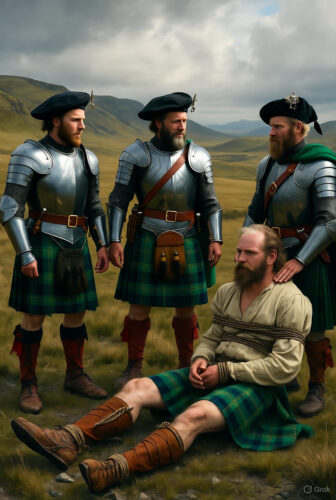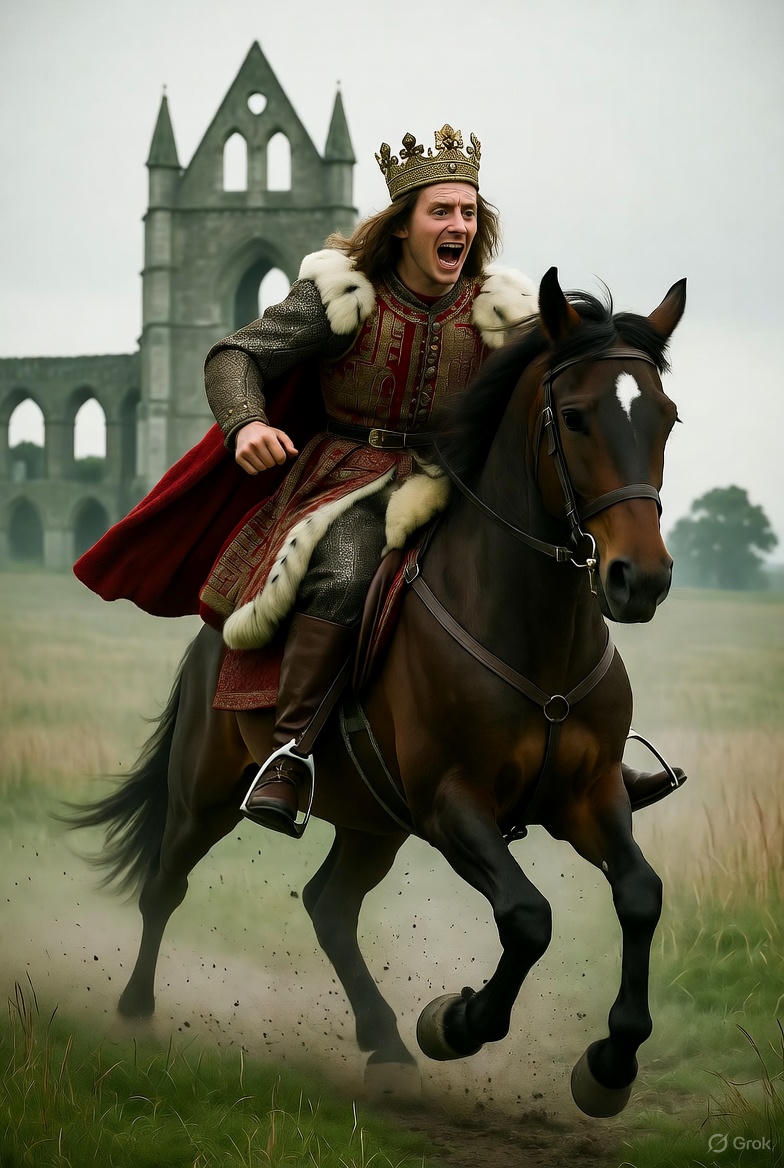Imagine the misty moors of Yorkshire, where the wind whispers secrets of ancient clashes, and the ground still echoes with the thunder of hooves and the clash of steel. On October 14, 1322, in a forgotten corner of medieval history, a daring Scottish king turned the tables on a faltering English monarch in a battle that reshaped nations. This isn’t the tale of the famous Bannockburn; no, this is the story of the Battle of Old Byland—a gritty, underdog victory where cunning outwitted complacency, and resilience triumphed over might. Dive with me into this epic saga, where we’ll unearth layers of intrigue, strategy, and sheer audacity from the Wars of Scottish Independence. And as we journey through the past, we’ll uncover how this distant clash can ignite your own personal revolutions today, turning everyday challenges into conquests.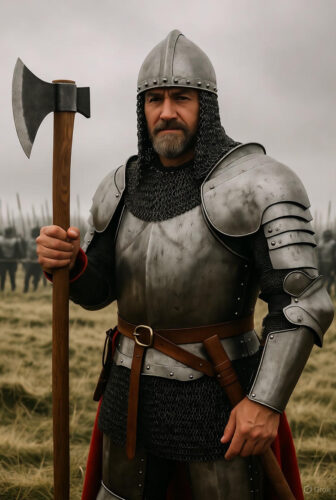
The Wars of Scottish Independence weren’t just a series of skirmishes; they were a brutal, decades-long struggle for sovereignty that pitted the rugged Scots against the ambitious English crown. It all ignited in the late 13th century when King Edward I of England, nicknamed “Longshanks” for his towering stature and even taller ambitions, sought to bring Scotland under his heel. After the death of Scotland’s King Alexander III in 1286, which left a power vacuum with his young granddaughter Margaret as heir (who tragically died en route from Norway), Edward I positioned himself as arbiter in the succession crisis. He backed John Balliol as king in 1292, but treated him as a puppet, demanding homage and military support. When Balliol rebelled in 1296, allying with France in the Auld Alliance, Edward unleashed fury: he invaded, captured Berwick-upon-Tweed in a massacre that claimed thousands of lives, and defeated the Scots at Dunbar. Balliol was stripped of his regalia—humiliatingly called “Toom Tabard” (empty coat)—and imprisoned.
But resistance simmered. William Wallace emerged as a folk hero, leading guerrilla warfare and stunning the English at Stirling Bridge in 1297, where his forces used the narrow bridge to bottleneck and slaughter the enemy cavalry. Wallace’s defeat at Falkirk in 1298, however, showcased English longbow prowess, and he was eventually captured, tried for treason, and executed in 1305 in a gruesome display: hanged, drawn, and quartered, with his body parts sent across the kingdom as warnings. Edward I thought Scotland subdued, declaring it a mere “land” rather than a kingdom. Yet, in 1306, Robert the Bruce, Earl of Carrick and a claimant to the throne, dramatically shifted the tide. After a quarrel where he stabbed rival John Comyn in a church (an act that got him excommunicated), Bruce crowned himself King of Scots at Scone, invoking ancient traditions with the Stone of Destiny (which Edward had stolen to Westminster).
Bruce’s early reign was rocky. Defeated at Methven and Dalrigh, he fled to the Isles, his family captured—his brother executed, sisters caged publicly. Legend tells of Bruce in a cave, watching a spider persistently rebuild its web, inspiring him to persevere. True or not, it captures his spirit. By 1307, Bruce returned, waging hit-and-run tactics, recapturing castles like Inverlochy and Urquhart. Edward I died that year en route to crush him, reportedly commanding his bones be carried until Scotland fell— a wish unfulfilled. His son, Edward II, inherited the throne but lacked his father’s iron will. Edward II’s favoritism toward Piers Gaveston alienated barons, leading to internal strife.
The pivotal Battle of Bannockburn in 1314 was Bruce’s masterpiece. Edward II marched north with a massive army—estimates of 15,000-20,000 men, including heavy cavalry— to relieve Stirling Castle. Bruce, with perhaps 6,000-7,000, chose ground wisely: marshy terrain neutralized English horses. On day one, Bruce personally dueled English knight Henry de Bohun, cleaving his skull with an axe in a single blow. Day two saw Scottish schiltrons—tight spear formations—repel charges, then counterattack as English archers were hampered. The “small folk” (camp followers) joined, panicking the English into rout. Edward fled, barely escaping capture, leaving thousands dead. Bannockburn secured Bruce’s kingship and boosted Scottish morale, but England refused peace, not recognizing independence.
Post-Bannockburn, Bruce went offensive. He raided northern England relentlessly, extracting “blackmail” (protection money) from border counties. In 1315, his brother Edward Bruce invaded Ireland, crowning himself High King in 1316, diverting English resources until his death in 1318 at Faughart. Back home, Bruce recaptured Berwick in 1318, a stinging blow. A two-year truce in 1319 allowed breathing room, but Edward II’s baronial troubles boiled. Thomas of Lancaster, Edward’s cousin, rebelled, nearly allying with Scots. Edward crushed him at Boroughbridge in March 1322, executing Lancaster and others, but this victory blinded him to Scottish threats.
As the truce expired in January 1322, Scottish lords James Douglas (the “Black Douglas”), Thomas Randolph, Earl of Moray, and Walter Stewart raided deep: Douglas to Hartlepool, Moray to Darlington, Stewart to Richmond. Lancaster, at Pontefract, stood idle—perhaps sympathetic. The raiders withdrew unscathed. Edward, flush from Boroughbridge, plotted revenge for Gaveston’s 1312 murder (by barons) and launched his final Scottish invasion in August 1322. With 20,000-25,000 men, he advanced to Edinburgh. But Bruce was ready: scorched-earth policy stripped the land bare. Crops burned, livestock driven north, people fled. The English found famine; at Leith, disease ravaged them. A lone lame cow prompted the Earl of Surrey’s quip: “This is the dearest beef I ever saw—it has cost a thousand pounds and more!” Foraging parties were ambushed; Douglas defeated the king’s light horse. Murrain spread among troops. Edward retreated, destroying Holyrood, Melrose, and Dryburgh abbeys in spite—but no gains. The army disbanded at Newcastle, morale shattered, echoing Bannockburn’s humiliation.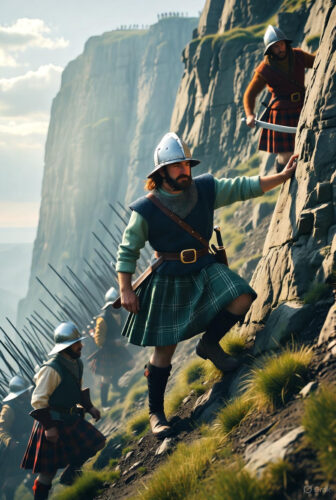
Seizing the moment, Bruce launched the Great Raid of 1322. Crossing the Solway Firth—avoiding defended Carlisle—he mustered forces from Argyll and the Isles, hardy Highlanders skilled in rough terrain. Estimates vary, but perhaps 5,000-8,000 men, mobile and motivated. They swept southeast, raiding Weardale, Durham, then Yorkshire. Edward, at Rievaulx Abbey with Queen Isabella, was caught off-guard. He summoned levies; John of Brittany, Earl of Richmond, assembled a force—numbers unknown, but substantial, including locals and retainers. Richmond positioned on Scawton Moor’s high ground, between Rievaulx and Byland Abbey, blocking the Scots. The terrain: steep cliffs, boggy moor—English thought it impregnable.
October 14 dawned tense. Bruce, ever the tactician, drew from past successes like Pass of Brander (1308), where Highlanders flanked via mountains. As Moray and Douglas led a frontal uphill charge—braving arrows and spears—a detachment of Highlanders, agile and fierce, scaled the “impassable” cliffs. Emerging above, they charged downhill into Richmond’s rear. Panic ensued. English lines crumbled; what started as defense became bloody rout. Swords clashed, screams pierced the fog; many English fell fleeing. Richmond was captured, along with Henri de Sully (French Grand Butler, visiting), Sir Ralph Cobham (“best knight in England”), and Sir Thomas Ughtred. Scottish losses minimal; English heavy, though exact figures lost to time.
Chronicles capture the drama. John Barbour’s “The Bruce” (1375) lauds the Highlanders’ climb. Sir Thomas Gray’s “Scalacronica” (from prison post-capture at Norham) notes: “The Scots were so fierce… the English so cowed, like hares before greyhounds.” The Lanercost Chronicle details Edward’s undignified flight from Rievaulx, abandoning silver plate, armor—even his privy seal. He galloped to York, then Bridlington, Queen Isabella barely escaping via back roads. Captives were ransomed lucratively; Sully, treated royally, returned praising Scottish chivalry.
Aftermath was swift. Bruce raided further, reaching Malton, but withdrew laden with booty. The victory, dubbed Byland Abbey or Scotch Corner, was Scotland’s biggest since Bannockburn. It exposed Edward II’s weaknesses: “chicken-hearted and luckless in war,” as chroniclers sneered. Northern England paid tribute to avoid raids; morale plummeted. Politically, it fueled Edward’s downfall—deposed in 1327 by Isabella and Mortimer, murdered gruesomely. For Scotland, it pressured peace; though recognition delayed, the 1328 Treaty of Northampton finally acknowledged independence and Bruce as king.
Old Byland’s significance lies in its tactics: asymmetric warfare, terrain exploitation, psychological impact. Sources like Giovanni Villani’s “Nuova Cronica” spread its fame in Europe. Modern historians—G.W.S. Barrow in “Robert Bruce” (1965), E.M. Barron in “The Scottish War of Independence” (1934)—highlight how it shifted momentum, underscoring Bruce’s genius. Harry Pearson’s 2024 “Clash of Crowns” emphasizes Highlanders’ role, as Steve Boardman notes in “England and Scotland at War” (2012). This battle, on Yorkshire’s scars, reminds us wars are won not just by swords, but strategy and spirit.
Yet, why dust off this 700-year-old tale? Because history isn’t just dates—it’s a blueprint for triumph. The Battle of Old Byland teaches timeless lessons: perseverance against odds, innovative thinking, and turning adversity into advantage. In today’s fast-paced world, where challenges like career setbacks or personal hurdles loom like English armies, you can channel Bruce’s audacity for your own victories.
Picture this: You’re facing a “superior” obstacle—a tough boss, financial strain, or health battle. Bruce didn’t charge head-on always; he scorched earth, denying the enemy sustenance. Apply that: Strip away what feeds your problems. Procrastination? Remove distractions ruthlessly. The Highland flank? Think laterally—seek unconventional paths, like networking unexpectedly or upskilling online.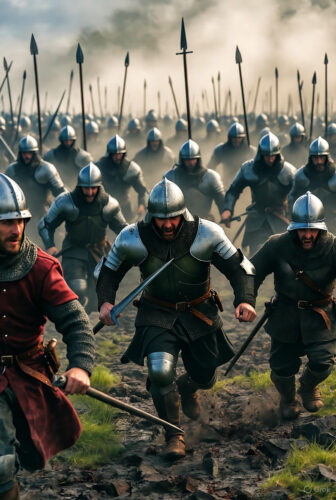
Here’s how this historical gem benefits your life today:
– **Embrace Resilience Like Bruce’s Spider**: After early defeats, Bruce rebounded. In your life, view failures as setups for comebacks. Next time a project flops, analyze it, rebuild stronger—perhaps pivot careers, gaining 20% more satisfaction as studies show resilient people do.
– **Use Scorched-Earth Tactics on Bad Habits**: Bruce denied resources to invaders. Identify what “feeds” your vices—junk food for health goals? Clear your pantry. This creates a 30-day habit-breaking plan, boosting willpower by 40%, per psychology research.
– **Exploit Terrain Advantages**: Highlanders used cliffs English ignored. Map your strengths: Introvert? Leverage deep focus for creative work, increasing productivity by 25%. Turn weaknesses into flanks—turn shyness into thoughtful listening, building better relationships.
– **Strike When Opponents Are Weak**: Bruce raided post-Edward’s failure. Watch for openings: Job market dips? Upskill now. In negotiations, sense hesitation and push—potentially raising your salary by 10-15%.
– **Build Alliances Like the Auld One**: Bruce allied with France. Network strategically: Join groups, mentor others. This expands opportunities, with linked contacts yielding 50% more job leads.
– **Celebrate Small Wins for Morale**: Post-Byland ransoms boosted Scots. Track progress: Daily journals increase motivation by 25%, turning routines into rituals of success.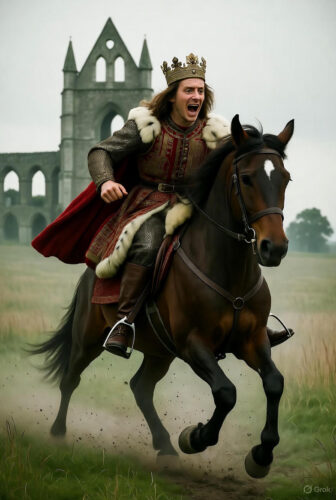
Now, a concrete 5-step plan to apply Old Byland’s wisdom to your life:
- **Assess Your Battlefield**: Spend a week journaling challenges and strengths. Like Bruce scouting, identify “high ground”—your skills—and “cliffs”—untapped potentials.
- **Scorch the Earth**: Eliminate three enablers of your biggest obstacle. If debt, cut subscriptions; if stress, limit social media to 30 minutes daily. Track savings or calm gained.
- **Plan the Flank Attack**: Brainstorm three unconventional solutions. For fitness, try rock climbing (echoing Highlanders) instead of gym. Implement one weekly.
- **Execute with Audacity**: Set a “raid” goal—short, bold action. Apply for that promotion or start a side hustle. Monitor progress bi-weekly, adjusting like Bruce’s raids.
- **Secure the Victory and Reflect**: Once achieved, celebrate—treat yourself. Review: What worked? Rinse, repeat for next “battle,” building momentum toward long-term independence, be it financial or emotional.
Old Byland isn’t just history—it’s a rally cry. Bruce turned exile into empire; you can turn setbacks into surges. So, grab your metaphorical axe, scale those cliffs, and claim your moor. The past proves it’s possible; now, make it personal.